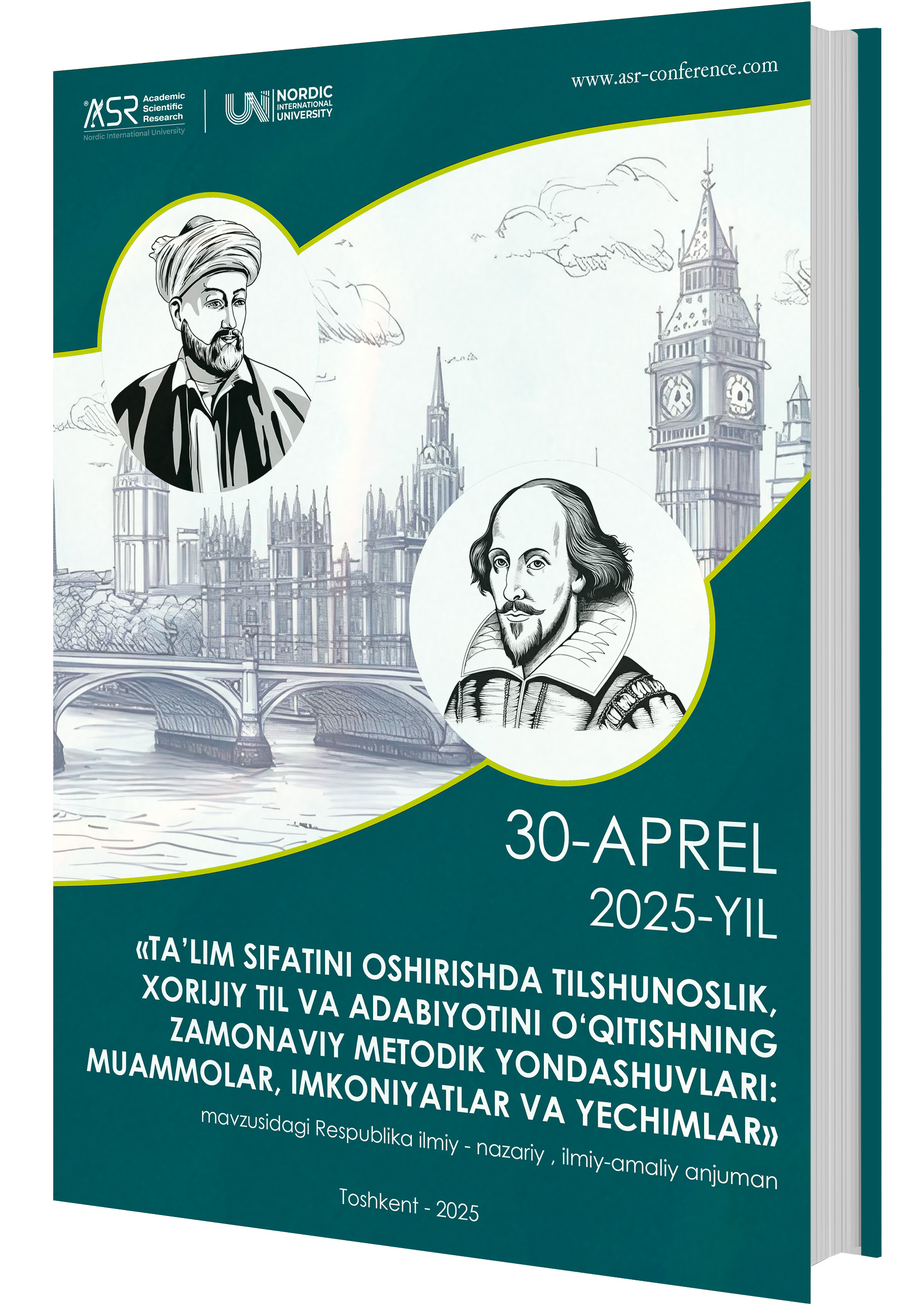A COMPARATIVE ANALYSIS OF THIRD-PERSON PRONOUN DEPLOYMENT IN THE TWO DISTINCT LANGUAGES: UZBEK AND ENGLISH
Аннотация
This thesis examines the application of third-person pronouns in two distinct languages: English and Uzbek. The assessment centers on significant aspects such as gender differentiation, levels of formality, possessive forms, reflexive pronouns, and instances where pronouns are omitted in both languages. In English, third-person pronouns are specific to gender, featuring distinct forms for masculine, feminine, and neutral subjects, while a noticeable distinction between formal and informal address is conveyed through titles rather than pronouns. Conversely, Uzbek employs a neutral third-person pronoun that does not differentiate by gender, with formality articulated through particular honorifics and plural constructions. Moreover, the agglutinative nature of Uzbek permits the omission of pronouns when the subject is implied through verb conjugation, a feature absent in English. This paper underscores how these variations mirror the grammatical frameworks and cultural practices of each language, offering insights into the ways language influences social interactions and communication. These linguistic traits not only shape daily conversations but also have repercussions on literature, media, and education, illuminating the profound links between language, identity, and societal values. Grasping these subtleties is crucial for language learners and educators, as it cultivates a deeper understanding of the complexities of communication and promotes more effective cross-cultural exchanges.
Библиографические ссылки
Jones, L. (2016).Language and gender identities. https://doi.org/10.4324/9781315669816-24.
Kim, C.-K. (2009). Personal pronouns in English and Korean texts: A corpus-based study in terms of textual interaction.Journal of Pragmatics. https://doi.org/10.1016/J.PRAGMA.2009.03.004.
Nazarov, S. (2025). A comparative study of structural-semantic characteristics of english and uzbek language word combinations.Deleted Journal. https://doi.org/10.47390/spr1342v5i1y2025n38.
Mamadjanova, N. (2016). Comparative Analysis of the Present Tense Forms in the English and Uzbek Languages. https://doi.org/10.15550/ASJ.2016.01.079.
Savignon, S. J., & Sysoyev, P. V. (2005). Cultures and Comparisons: Strategies for Learners.Foreign Language Annals. https://doi.org/10.1111/J.1944-9720.2005.TB02222.X.
Tojiyeva, D. S. (2020). The difference and peculiarities in english and uzbek particles.Theoretical & Applied Science. https://doi.org/10.15863/TAS.2020.06.86.60
Загрузки
Опубликован
Выпуск
Раздел
Лицензия
Copyright (c) 2025 Durdona Azizova

Это произведение доступно по лицензии Creative Commons «Attribution-NonCommercial» («Атрибуция — Некоммерческое использование») 4.0 Всемирная.
Условия лицензии
Эта работа доступна под лицензией Creative Commons Attribution-NonCommercial 4.0 International License. Чтобы просмотреть копию этой лицензии, посетите http://creativecommons.org/licenses/by-nc/4.0/ или отправьте письмо по адресу Creative Commons, PO Box 1866, Mountain View, CA 94042, США.
По этой лицензии вы можете:
Поделиться — копируйте и распространяйте материал на любом носителе и в любом формате.
Адаптируйте — делайте ремиксы, трансформируйте и дорабатывайте материал.
Лицензиар не может отозвать эти свободы, если вы соблюдаете условия лицензии. На следующих условиях:
Атрибуция. Вы должны указать соответствующую ссылку, предоставить ссылку на лицензию и указать, были ли внесены изменения. Вы можете сделать это любым разумным способом, но не таким образом, который бы предполагал, что лицензиар одобряет вас или ваше использование.
Некоммерческое использование — вы не имеете права использовать материал в коммерческих целях.
Никаких дополнительных ограничений. Вы не имеете права применять юридические условия или технологические меры, которые юридически запрещают другим делать все, что разрешено лицензией.





